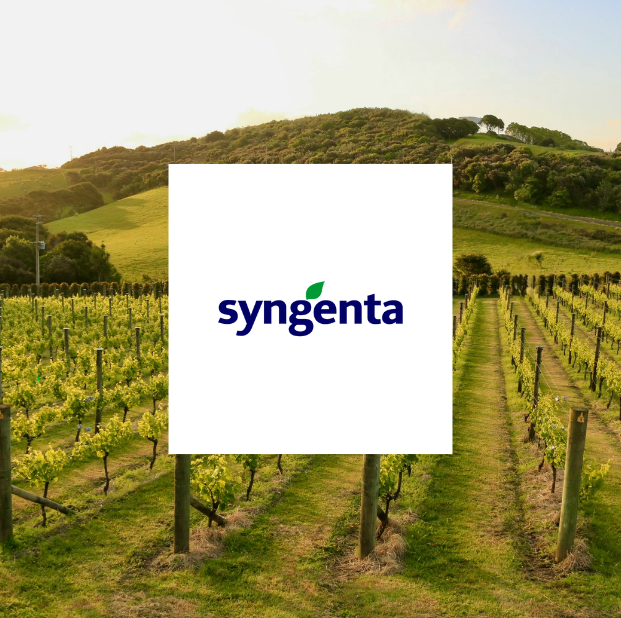Reinventing document management at scale

Industry
Life Sciences
Challenge
Syngenta’s legacy SmartDoc system slowed productivity with complex folder structures, poor search, and fragmented tools. Lacking governance and usability, it led to inefficiencies, siloed teams, and rising operational costs.
Solution and Results
Datavid and Hyland replaced Syngenta’s legacy system with a cloud-native platform that simplified document access, improved search with ElasticSearch, and enabled seamless integration across teams. The result: faster document handling, reduced silos, and a modern foundation for digital collaboration and growth.
Technology used
AWS, Nuxeo, ElasticSearch, Microsoft Azure, REST API
Learn how Syngenta has revolutionised its document management system through a strategic partnership between Datavid and Hyland.

About Syngenta
With almost 50 thousand people spread across the globe, Syngenta is a powerhouse in the agrochemical space, leading the field in most of its applications worldwide.Setting the Scene
In large, innovation-driven organisations like Syngenta, efficient access to information is vital to sustaining momentum across global research and development teams. Yet their legacy Enterprise Content Management System (ECMS), SmartDoc, had become a slow, fragmented, and complex bottleneck.
With growing document volumes, siloed solutions, and mounting inefficiencies, Syngenta needed more than an upgrade; they needed a transformation. Syngenta reimagined its document management landscape through a strategic partnership with Datavid and Hyland, Syngenta reimagined its document management landscape, moving to a scalable, cloud-native solution that streamlines access, reduces costs, and lays the foundation for future digital growth.
Struggling with legacy systems?
Start your transformation with intelligent solutions designed for scale, speed, and simplicity.
The Challenges
Transformation of document management system
Syngenta faced significant challenges with its Enterprise Content Management System (ECMS), particularly with the outdated SmartDoc platform. Despite being widely utilised across the organisation, SmartDoc was plagued with performance issues, cumbersome functionality, and a convoluted folder structure, making document management a tedious task.

Syngenta's legacy document management system was hampered by slow performance, lengthy upload times, and inefficient retrieval processes. Users struggled with a complex folder structure and rigid access model, making permission management difficult. An outdated search function and a lack of governance led to widespread confusion and inconsistency in how documents were handled across the organisation.
To overcome these limitations, teams adopted their tools, creating silos and driving up costs. The fragmented landscape made it clear that a simple upgrade wouldn't suffice. Syngenta embarked on a complete transformation to streamline document management, improve usability, unify practices, reduce complexity, eliminate duplication, and enable more efficient collaboration at scale.
The Solution
Cloud-based enhancement for document management
The remedy to Syngenta's document management hurdles came in the form of a cloud-based solution, designed to simplify the process while significantly boosting performance and user experience. This strategic upgrade involved a migration to Amazon Web Services (AWS), a move that promised to revolutionise how documents were managed, shared, and retrieved within the organisation.
Streamlining document management with AWS
The key focus of the AWS migration was to address the critical questions that hampered the old system:

The Outcomes
Efficient Document Management and Enhanced User Experience
The implementation of the cloud-based solution has dramatically transformed Syngenta's document management system, aligning it with the company's R&D digital content strategy and leading to significant improvements in performance, usability, and collaboration.
This strategic move has not only simplified the management and sharing of documents but also enhanced the overall user experience.

Key achievements of the cloud-based solution
With more than 2.6 million documents migrated and integration with 15 downstream applications, the solution has successfully catered to the needs of over 5,000 users globally.
This extensive reach and the system's enhanced capabilities have led to:
- Improved document access and management: Users across the globe can now easily access, manage, and share documents, significantly improving operational efficiency and productivity.
- Cost savings: The streamlined landscape and use of open-source technologies have led to considerable cost savings for Syngenta.
- Increased collaboration: Enhanced collaboration tools and simplified access rights have fostered a more collaborative environment, facilitating innovation and knowledge sharing across teams.
- Alignment with strategic Goals: The new document management system is perfectly aligned with Syngenta's strategic goals, supporting its digital transformation journey and ensuring the company remains at the forefront of R&D innovation.
This comprehensive transformation of Syngenta's document management system has not only improved the day-to-day operations of the company but also positioned it for future growth and success in the digital age.
About the Technology
The transformation of Syngenta's document management system was achieved through a strategic partnership between Datavid and Hyland, utilising the Nuxeo Platform - a cloud-native, low-code content management platform renowned for its ability to streamline the creation and deployment of intelligent applications and workflows.
This transformation capitalised on several advanced technologies to enhance accessibility, integration, and search functionality.
- The implementation of Azure Single Sign-On for authentication and authorisation simplified user access across the ecosystem, allowing seamless navigation without the need for multiple logins.
- A REST API Proxy Layer was ingeniously constructed to ensure robust integration with 15 distinct applications, further augmenting the system's coherence and operational fluidity.
- Elastic Search was employed to revolutionize the search experience, enabling swift and relevant access to millions of documents and their metadata, thus significantly enhancing user satisfaction.
- The migration process saw millions of documents and folders transitioned from an outdated management tool to Nuxeo, with Amazon S3 serving as the backbone for secure and scalable storage. To address the demands of high performance and speed, the system was designed across multiple AWS EC2 instances, achieving optimal load balancing and system responsiveness.
One of the key advantages of adopting Nuxeo was its open-source foundation, which gave Syngenta the flexibility to configure the platform around its core needs. Rather than extensive customisation, which can hinder long-term maintainability. Syngenta strategically tailored the solution where it added clear value. This approach enabled a cost-effective transformation of its document management system, resulting in a more integrated, accessible, and efficient digital working environment.


